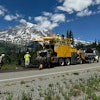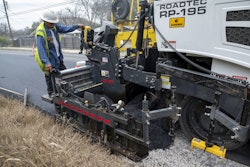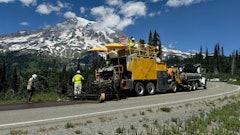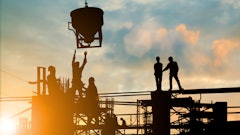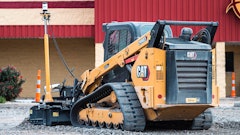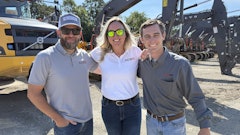
As the Occupational Safety and Health Administration (OSHA) continues developing its proposed federal standard to address heat-related illness and injury in the workplace, the American Road & Transportation Builders Association (ARTBA) has submitted detailed written responses outlining the transportation construction industry’s perspective on how such a rule should be structured.
I've written previously about state-level heat safety policy here.
The proposed standard, which follows years of public comment and stakeholder hearings, seeks to establish nationwide requirements for hydration, rest breaks, acclimatization, and access to shade for workers in high-heat environments. The initiative represents OSHA’s first attempt to codify federal heat protections across all industries.
ARTBA, representing more than 8,000 members across the public and private sectors, including contractors, materials suppliers, designers, and equipment manufacturers, emphasized its members’ long experience in managing heat exposure on job sites. In its Oct. 30 response letter, the association noted that the industry has, “Long implemented effective measures for protecting workers from the inherent risks of working in high-temperature, outdoor environments.”
However, ARTBA expressed concerns that OSHA’s 2024 proposal, “Takes a prescriptive approach, rather than incorporating the industry’s strategies that have successfully managed these hazards.”
The association’s feedback centered on practicality, feasibility, and the need for flexibility in implementation.
Focus on Practical Implementation
ARTBA argued that several provisions of the draft rule would be difficult to apply to real-world transportation projects, especially for small contractors and continuous operations such as paving or concrete placement. The association said the proposal would require, “Extensive documentation, including tracking individual water consumption and break times, logging ambient temperature on job sites throughout the day, and reconfiguring entire operations to account for breaks at prescribed times.”
“The cumulative burden could hinder project efficiency and increase costs, with minimal—if any—improvements to existing safety benchmarks,” ARTBA wrote. Smaller firms, it added, “Would need dedicated personnel just to manage these mounds of paperwork.”
Instead of fixed or mandated procedures, ARTBA suggested that OSHA adopt a performance-based model similar to the agency’s existing silica rule. Such an approach, the group said, “Would be tailored to job type, daily hazard analysis, and task-specific exertion levels,” while prioritizing worker knowledge of symptoms and access to controls over rigid documentation.
Shared Responsibility and Existing Practices
Throughout its responses, ARTBA described a shared responsibility model between employers and workers. The association acknowledged that employers “bear the primary duty under OSHA’s General Duty Clause to provide a safe work environment,” but emphasized that employees also have an important role in self-monitoring.
“Workers should be encouraged to, and not penalized for, hydrating regularly and using water, shade, and rest breaks as provided by the employer,” ARTBA stated. “They should also alert supervisors if they experience symptoms of heat stress or other medical issues.”
Common heat-mitigation practices already in use, the association noted, include adjusting work hours to avoid peak heat, rotating crews through less strenuous tasks, providing water coolers and shaded rest areas, and monitoring new employees for signs of overexertion. In many cases, ARTBA said, “water and rest are [already] standard protocols on all job sites.”
Concerns Over Mandated Breaks and Liability
ARTBA also raised logistical and legal concerns with OSHA’s proposed requirement for frequent scheduled breaks, citing the possible need for extra laborer in a market that's already stretched statistically thin.
“Complying with a mandated break for every employee every two hours… would necessitate adding personnel on the job site, with associated increases in project costs,” the group wrote, adding that such measures would provide minimal additional safety benefits.
The organization also requested clarity regarding employer liability when incidents occur despite compliance. As employers would be concerned about liability in certain cases where all reasonable precautions were taken but an incident still occurs. ARTBA noted certain instances in which employers faced citations even after meeting DOT safety requirements.
It's worth remembering that these types of events are possible in all sorts of work environment contexts, not just heat safety, and OSHA still hold employers responsible while workers are, for all intents-and-purposes, in their care. Some residual liability could be seen as inherent to the employer-employee dynamic.
Coordination Between Agencies
In its comments, ARTBA urged OSHA to defer to the Department of Transportation (DOT) in cases where both agencies’ regulations overlap. “[The] DOT and its modal administrations have deep expertise in managing safety risks tied to roadway, bridge, and transportation system operations,” the response said. “A DOT-led standard ensures both safety and operational feasibility without imposing conflicting obligations.”
ARTBA’s submission concludes by reaffirming that the transportation construction industry shares OSHA’s goal of protecting workers from heat-related illness, but believes the rule should reflect operational realities.
“A final rule that harmonizes with DOT safety regulations and allows for performance-based compliance,” the association wrote, “will best advance our shared goal of protecting workers while maintaining the efficiency and reliability of the nation’s transportation infrastructure system.”
To read the response in full, click here.



